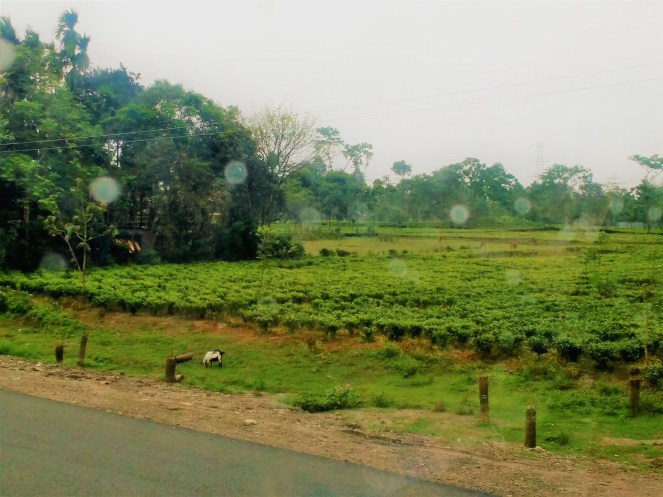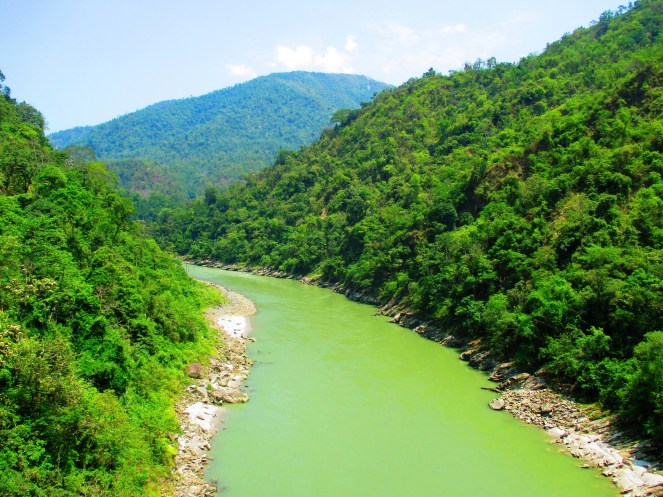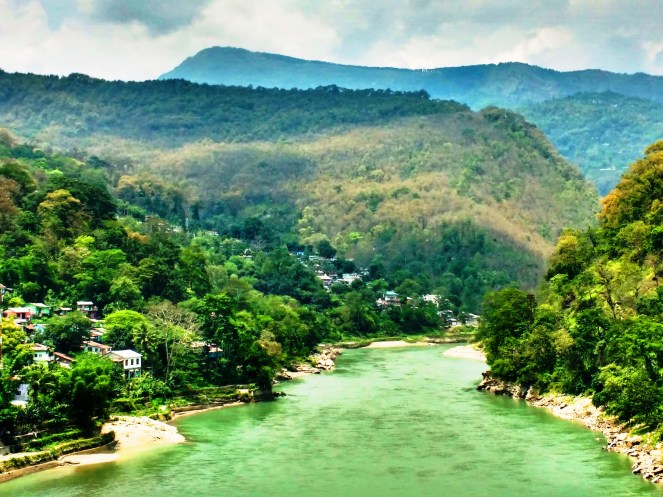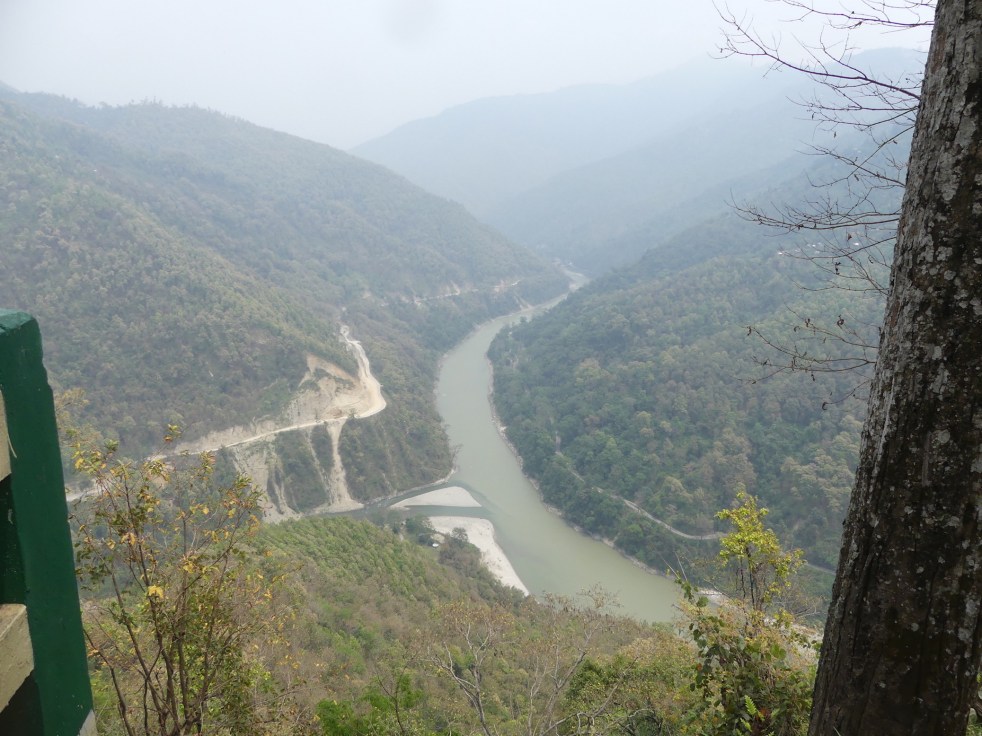Above: Fabulous view of Rangeet Teesta Confluence (Photo: AJT Johnsingh)
Guest Blog by Gauri Noolkar-Oak
The minute I crossed over the Indo-Bangladesh border into India at Chengrabandha, the atmosphere changed instantly; more briskness, more people and more English and Hindi surrounded me. I also spotted posters of Baahubali 2, and a few flags of Bhartiya Janata Party fluttered at the local bus station of Chengrabandha. I set out for Mainaguri, and through the pitter-patter of a weak drizzle, as the first tea plantations came into view.


Mainaguri is separated from the iconic Jalpaiguri town by the Teesta. Riding the bus over the connecting bridge, I was first startled and then slightly miffed to see a Teesta bleaker than the one in Bangladesh. Electricity towers were constructed in the dry riverbed and sand mining activities were in full swing.


The Teesta is an integral part of the culture of North Bengal; it pervades into stories and songs, prayers and practices. At the Jalpesh temple near Mainaguri, I was lucky to witness a local competition featuring an array of Mechhi dances, all featuring prayers to the “buri” or old Teesta. Women, young and old, sang and danced to a small vial filled with the waters of the Teesta and covered with a fondly decorated umbrella. Their graceful actions, lovely sarees, and expressive faces were a treat to watch.

The Teesta is also important economically; it is a principal source of water for the agriculture of the region. It is near Jalpaiguri that the controversial Gajaldoba barrage has been built. Two canals flowed out from the Gajaldoba; the one flowing to the east was as dry as a bone, but the one flowing to the west and eventually to Mahananda river was, just like the west-flowing canal of Dalia barrage, brimming cheerfully with water. Nowhere was the condition of the river more apparent than at Gajaldoba barrage. Upstream, there was water as far as you could see. Downstream, the river bed was exposed like an uncomfortable wound. On the banks of the river, a small bazaar had bloomed, and the government had put up a board depicting an ambitious plan to develop the area around the barrage into a sophisticated tourist spot. And yet, the bustling market and the plans gave me little respite in comparison to the sorry state of the river. I was expecting to see this and yet, I was aghast; the reality was too evident and in your face.




The twisted image of Teesta, wrung out at some places, drenched at other, lingered on in my mind. It was only at Sevoke where the river hits the plains that she bloomed in all her beauty and took my breath away. The historical Coronation Bridge and the Teesta Railway Bridge, which connect the North East to the rest of India, are just a few kilometres from each other. On my way to Kalimpong from Siliguri, I couldn’t help but stop and spend a few moments admiring the meeting of the hills and the plains and, in their lap, a youthful river.






After Sevoke, the Teesta took on a totally different avatar. She was no longer slow, mild and vast like in the plains. Instead, the Teesta I saw now was curvy, slim and fast. On the plains, she was quiet and melancholic, but now, she burst forth, jumping over rocks with an enthusiasm that took me aback. She was brown from the silt she carried and she rushed with a pace that was difficult to contain, even for the Himalayas that towered over her. At Melli, about 20 kilometres from the town of Kalimpong, I went river rafting and we made our first contact. Her powerful force nearly jolted us out of the raft and her icy coldness froze me to the bone, even in the warm May sun. Her snowy white water was cold and sweet to taste. My local host advised me to wash off the ‘Teesta water’ as I could develop a rash, but I didn’t; I wanted to leave her touch on my skin.
– Gauri Noolkar-Oak (noolkargauri@gmail.com)
NOTE: For Photo Blog on Part 1 of this journey in Bangladesh, see: https://sandrp.wordpress.com/2017/06/30/retracing-her-path-a-journey-along-the-teesta-river-in-bangladesh/
2. For Photo Blog on Part 3 of this journey in Sikkim, see: https://sandrp.wordpress.com/2017/07/02/retracing-her-path-3-a-journey-along-the-teesta-river-in-sikkim/

One thought on “Retracing Her Path 2: A Journey along the Teesta River in W Bengal”